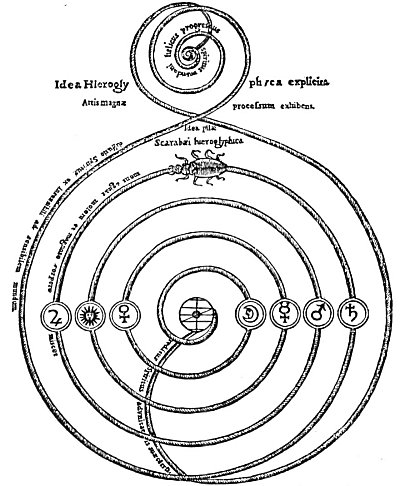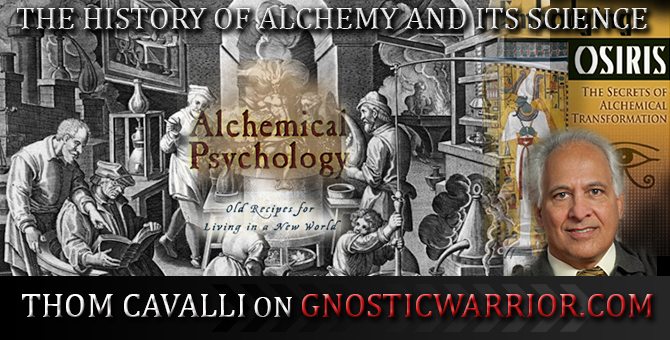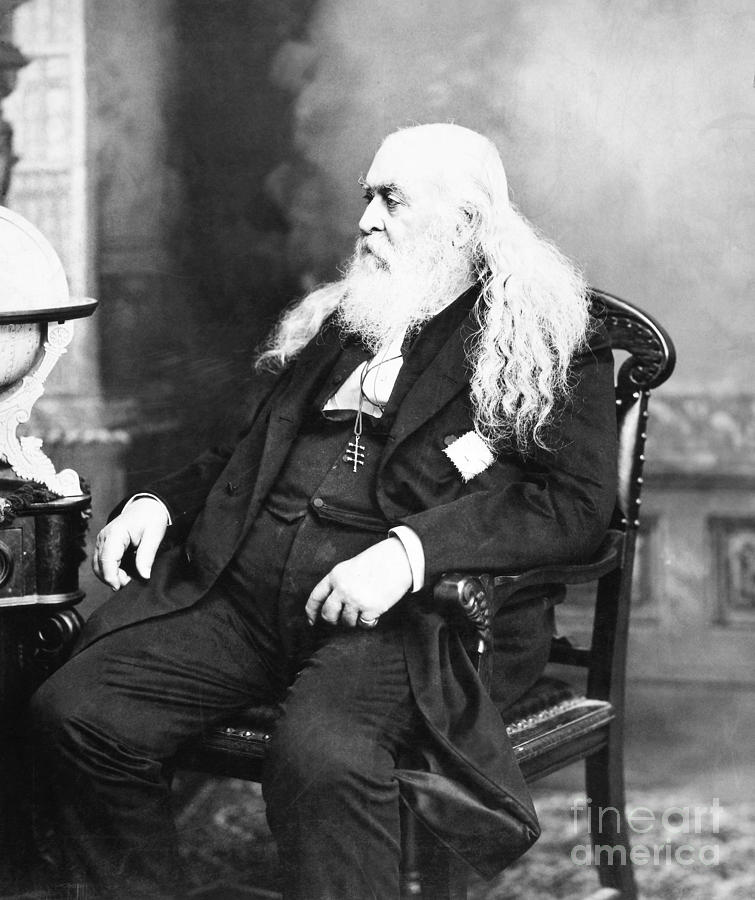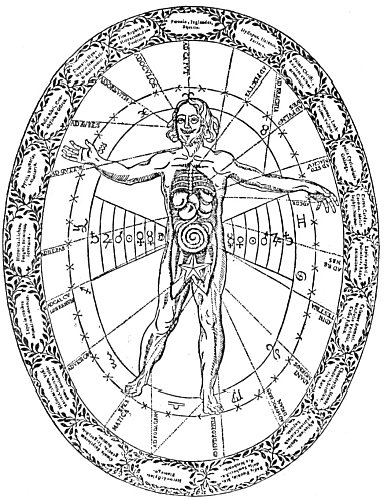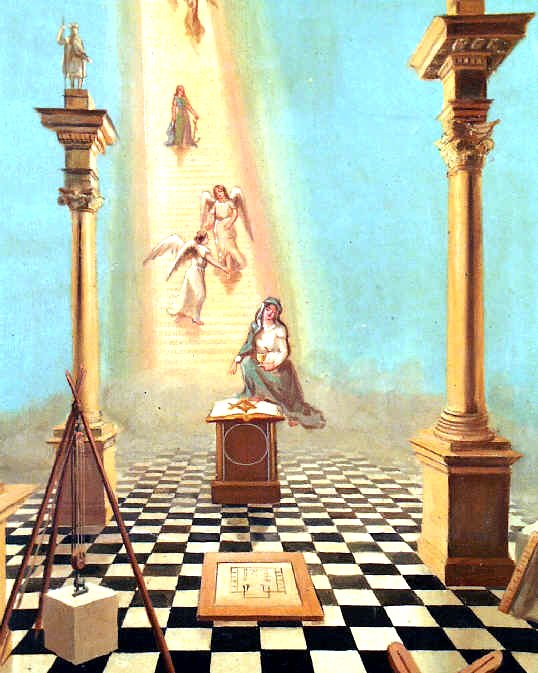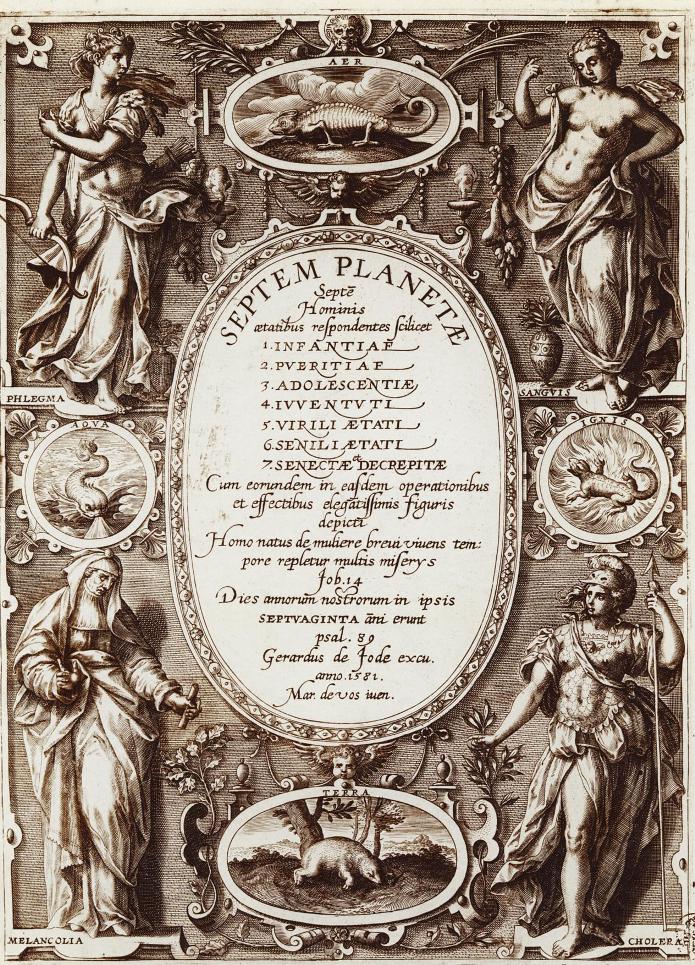“And because that this history did represent the more part of that of the innocents slain by Herod, and that in this book I learned the greatest part of the art, this was one of the causes why I placed in their church-yard these Hieroglyphic Symbols of this secret science. And thus you see that which was in the first five leaves.
“I will not represent unto you that which was written in good and intelligible Latin in all the other written leaves, for God would punish me, because I should commit a greater wickedness, than he who (as it is said) wished that all the men of the World had but one head that he might cut it off with one blow. Having with me therefore this fair book, I did nothing else day nor night, but study upon it, understanding very well all the operations that it showed, but not knowing with what matter I should begin, which made me very heavy and solitary, and caused me to fetch many a sigh. My wife Perrenella, whom I loved as myself, and had lately married was much astonished at this, comforting me, and earnestly demanding, if she could by any means deliver me from this trouble. I could not possibly hold my tongue, but told her all, and showed this fair book, whereof at the same instant that she saw it, she became as much enamoured as myself, taking extreme pleasure to behold the fair cover, gravings, images, and portraits, whereof notwithstanding she understood as little as I: yet it was a great comfort to me to talk with her, and to entertain myself, what we should do to have the interpretation of them.”
Nicholas Flammel spent many years studying the mysterious book. He even painted the pictures from it all over the walls of his house and made numerous copies which he showed to the learned men with whom he came in contact, but none could explain their secret significance. At last he determined to go forth in quest of an adept, or wise man, and after many wanderings he met a physician–by name Master Canches–who was immediately interested in the diagrams and asked to see the original book. They started forth together for Paris, and or, the way the physician adept explained many of the principles of the hieroglyphics to Flammel, but before they reached their journey’s end Master Canches was taken ill and died. Flammel buried him at Orleans, but having meditated deeply on the information he had secured during their brief acquaintance, he was able, with the assistance of his wife, to work out the formula for transmuting base metals into gold. He performed the experiment several times with perfect success, and before his death caused a number of hieroglyphic figures to be painted upon an arch of St. Innocent’s churchyard in Paris, wherein he concealed the entire formula as it had been revealed to him from the Book of Abraham the Jew.
COUNT BERNARD OF TREVISO
Of all those who sought for the Elixir of Life and the Philosopher’s Scone, few passed through the chain of disappointments that beset Count Bernard of Treviso, who was born in Padua in 1406 and died in 1490. His search for the Philosopher’s Stone and the secret of the transmutation of metals began when he was but fourteen years of age. He spent not only a lifetime but also a fortune in his quest. Count Bernard went from one alchemist and philosopher to another, each of whom unfolded some pet theorem which he eagerly accepted and experimented with but always without the desired result. His family believed him to be mad and declared that he was disgracing his house by his experiments, which were rapidly reducing him to a state of penury. He traveled in many countries, hoping that in distant places he would find wise men capable of assisting him. At last as he was approaching his seventy-sixth year, he was rewarded with success. The great secrets of the Elixir of Life, the Philosopher’s Stone, and the transmutation of metals were revealed to him. He wrote a little book describing the results of his labors, and while he lived only a few years to enjoy the fruitage of his discovery he was thoroughly satisfied that the treasure he had found was worth the lifetime spent in search of it. An example of the industry and perseverance displayed by him is to be found in one of the processes which some foolish pretender coaxed him to attempt and which resulted in his spending twenty years calcining egg shells and nearly an equal period distilling alcohol and other substances. In the history of alchemical research there never was a more patient and persevering disciple of the Great Arcanum.

Moe is the founder of GnosticWarrior.com. He is a father, husband, author, martial arts black belt, and an expert in Gnosticism, the occult, and esotericism.

